
06.12.2022 by Aileen Sammler
60 Years of NETZSCH-Gerätebau: History of the NETZSCH Software
Digitalization, artificial intelligence, user experience, one-click evaluation of measurement results along with predictions of the thermal behavior of materials, intelligent software platforms and Big Data – all these are current trends in our industry. Coming close to the end of our company’s year-long 60th anniversary celebration, we’ll be sharing insights into the history of our software’s development in the month of December. Let us surprise you with stories regarding Proteus® analysis software as well as KINETICS NEO, and learn how our customers can benefit from innovative NETZSCH software packages.
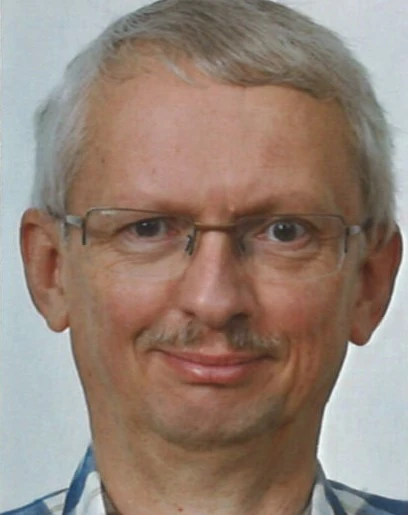
Let’s get started with some facts on the history of our software’s development presented by a pillar in the NETZSCH software department, Michael Gebhardt.
Michael Gebhardt graduated with a degree in electrical engineering/communications engineering from the Technical University of Erlangen in 1976. In 1982, with a graduate degree under his belt, he began work at NETZSCH-Gerätebau. Michael Gebhardt has been on board for the development of NETZSCH software from the very beginning. Right at the start of his professional life, this Selb native was entrusted with the task of developing ourdata acquisition and analysis software. This marked the beginning of the company’s own software department, which was supervised by Michael Gebhardt until the end of his professional career.
On June 1, 2022, our long-time expert handed his baton onward and entered his well-deserved retirement after 40 years in the company.
Many thanks for your commitment and all the best, dear Michael!
Pure Luxury: A Storage Capacity of 10 Megabytes and a Color Screen
“Until 1982, so in the first 20 years of the history of NETZSCH-Gerätebau, measuring instruments were sold with so-called ‘recorders’. Here, recording of the measurement curves was still carried out on paper. But the market seemed ready for digital recording of measurement data. That was when NETZSCH started with the development of the dilatometer software: At the end of 1982, the first dilatometer – a DIL 402 E – was delivered with software of the first generation. Unimaginable today: At that time, it took approximately two to three minutes for the graphics to finish compiling on the screen. The plotter output took about five to ten minutes.
Till the end of the 80s, we continued with further developments to the software. During the course of that, it was also adapted to support other devices such as an STA 409. By the way, a PC with a storage capacity of 10 MB and color screen could be bought for the paltry sum of 32,000 German marks at that time. :-) ”
1990s: Introduction of the Windows Operating System
“As of 1991, all programs were transferred to MS-DOS – the number 1 operating system at that time – and upgraded. By 1998, several thousands of deliveries had been made in which the instruments could be controlled by a PC.
In collaboration with an external partner, NETZSCH developed the first software for Microsoft Windows 3.11 for dynamic-mechanical analysis; specifically, for the DMA 242 analyzer. At the end of 1993, this was finalized as 16-bit software: version 2.
From then on, NETZSCH relied on the Microsoft Windows operating system: In the years to come, software versions for Microsoft Windows 95, 98 and 2000 for the DSC, DIL and STA instruments were developed.”
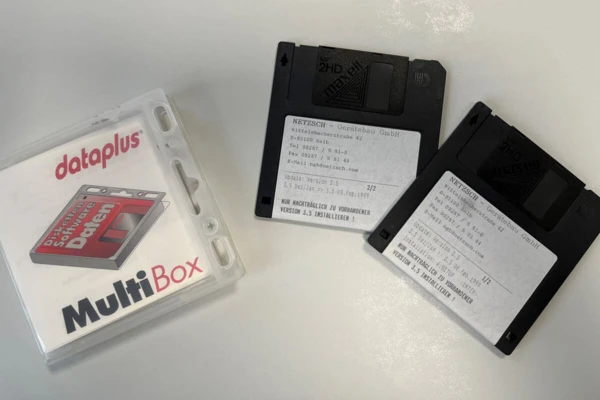

Our Analysis Software Gets Its Name: Proteus®
“In 2000, the 4.0 version of our software was introduced as the first 32-bit version. This was first available for Windows 2000 and then for Windows XP. In the same year, the new name for the NETZSCH thermal analysis software was launched on the occasion of our International Sales Meeting and “Proteus®” was introduced as a trade name.
Over the years, Proteus® was continually refined, expanded and supplemented with new innovative features. In addition to integrating further instruments, such as the DSC 404 F1 and LFA 427, electronics and instrument functions were also always being further developed.”
New Features: AutoEvaluation, Identify and SmartMode
“It was 2005 when NETZSCH Analyzing and Testing (A&T) started shipping its first instruments with USB connectivity, replacing the IEEE488 bus for all new instruments from that time onward. Two years later, we launched Proteus® 4.9 Pharma, serving the special requirements of the pharma industry such as CFR 21 Part 11.
In 2008, NETZSCH A&T introduced Proteus® 5 for the STA 449 F1 and F3 and later for the TMA 402 F1 /F3 . This was followed by Proteus® 6 in 2011, by Proteus®7 in 2014 and by Proteus® 8 in 2018. Moving forward, the software continued to add support for additional analyzers and include new innovative features for our customers:
Proteus® 7.0 featured the DSC polymer AutoEvaluation function as the first self-acting operator-independent evaluation routine for DSC curves on the market. By the way, in today’s Proteus® 9.0, there are already five different AutoEvaluation functions for DSC as well as AutoEvaluation for TGA, DIL and TMA signals. In addition, the new SmartMode for users in quality control was released in 2014. Among other features, this intuitive software interface allowed operators to start pre-defined measurement modes at the push of a button.”

And it was also version 7.0 in which the Identify feature became available for the first time as a unique tool for automatic curve recognition and interpretation in Proteus®.
The following example shows the recognition of an unknown polymer sample as PA12.
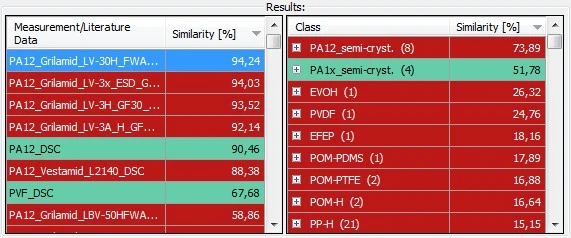

One year later, NETZSCH A&T - in collaboration with Kunststoffzentrum Lüdenscheid - introduced the “KIMW database” used in the example above for identification and quality control of polymers by means of differential scanning calorimetry (DSC), such that Identify now comprises a total of approx. 2500 data sets from all application areas (polymers, ceramics, pharmaceuticals, etc.). This makes Identify the most comprehensive database in thermal analysis, including not only measurement curves from the fields of DSC, TGA, DIL/TMA and cp along with measurement conditions employed, but also a great deal of literature data.
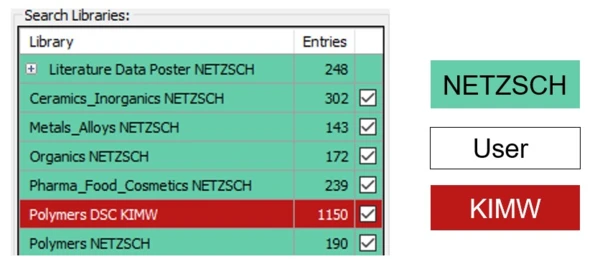
Many thanks to Michael Gebhardt for the exciting insights into our software history!
And also in 2022, a lot has happened on the software side:
High-End Proteus® 9 Analysis Software Available
In line with the launch of the new DSC 300 Caliris®®, the latest Proteus® 9.0 64-bit version has been released this year. Along with a new configuration system and a new setup, the software offers the new “Customize Menu” and “Workspaces” features: The operator can now individually configure the working environment in the analysis from the entire pool of functionalities. By means of the Proteus® Search Engine , users can search for measurement and analysis files, filter or sort them – ideal for fast quality control! AutoEvaluation is now also available for OIT measurements (OxidationOxidation can describe different processes in the context of thermal analysis.Oxidation Induction Time): The Oxidative-Induction Time (OIT) and Oxidative-Onset Temperature (OOT)Oxidative Induction Time (isothermal OIT) is a relative measure of the resistance of a (stabilized) material to oxidative decomposition. Oxidative-Induction Temperature (dynamic OIT) or Oxidative-Onset Temperature (OOT) is a relative measure of the resistance of a (stabilized) material to oxidative decomposition.OIT evaluations can be used for tangential and offset procedures.
Curious? Book the course at our NETZSCH Online Academy that will inform you about all the new features in Proteus® 9 – of course, free of charge. Just click on the picture below:
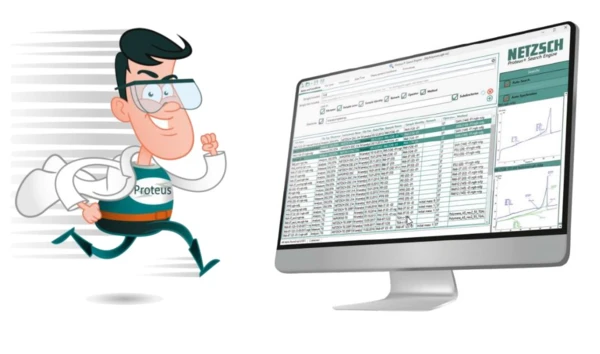
By the way, as part of our corporate strategy, we also developed a software strategy to keep up with market requirements, which are currently in a persistent state of rapid change. We are already working on the next “big thing” – you have what to look forward to! :-)